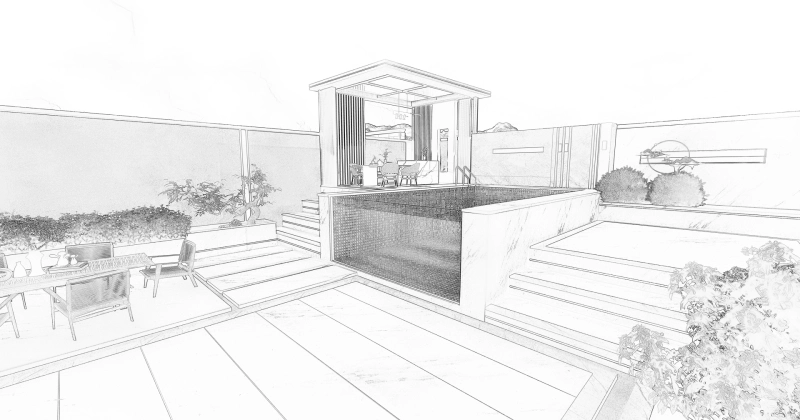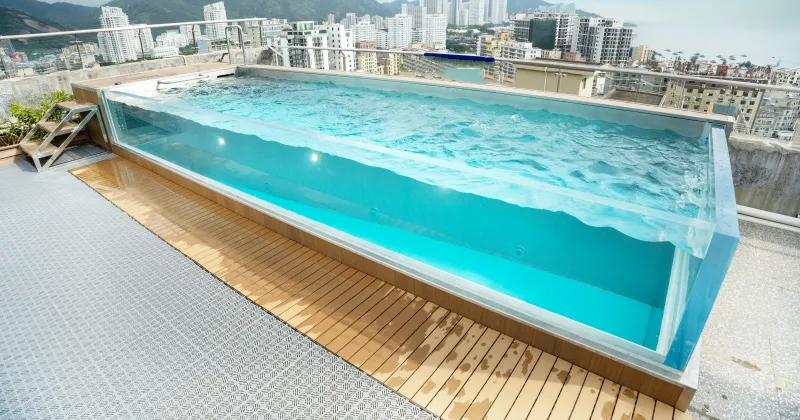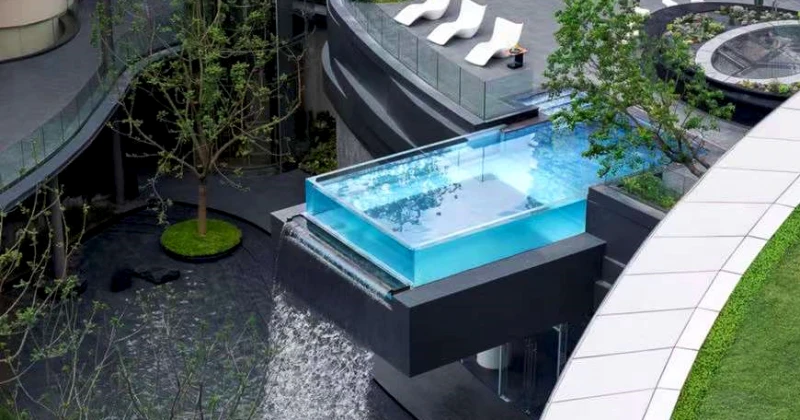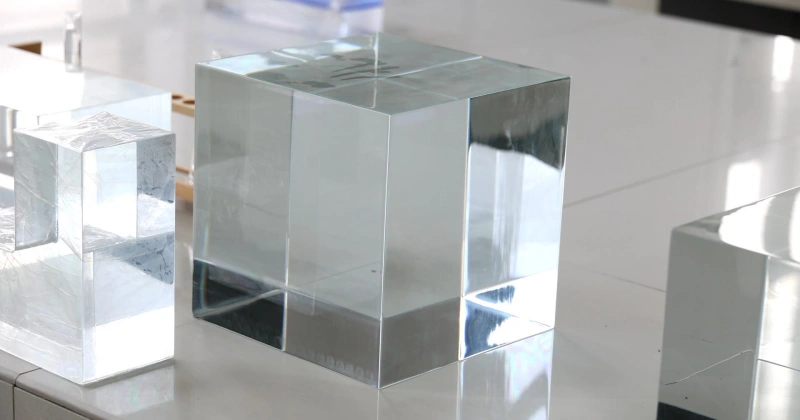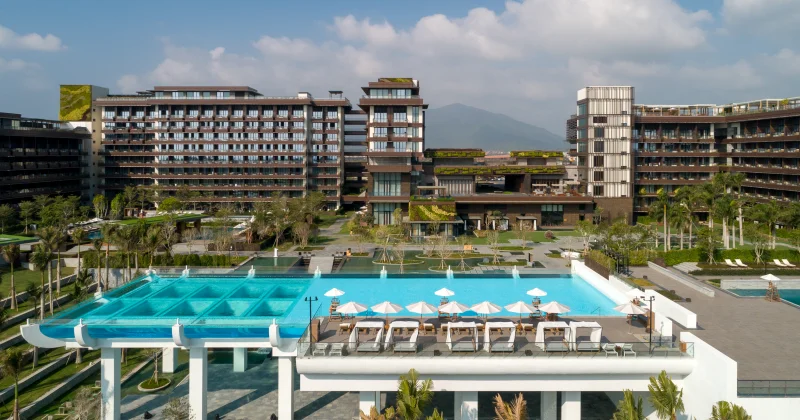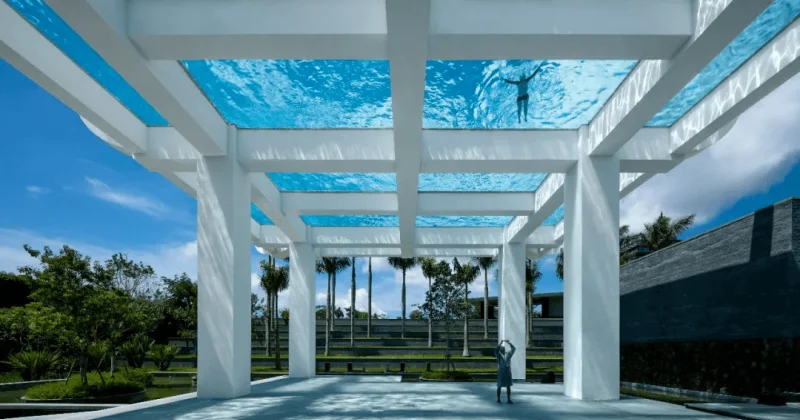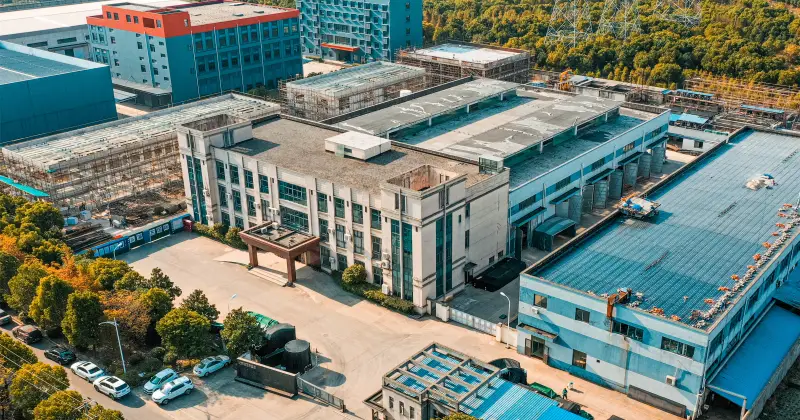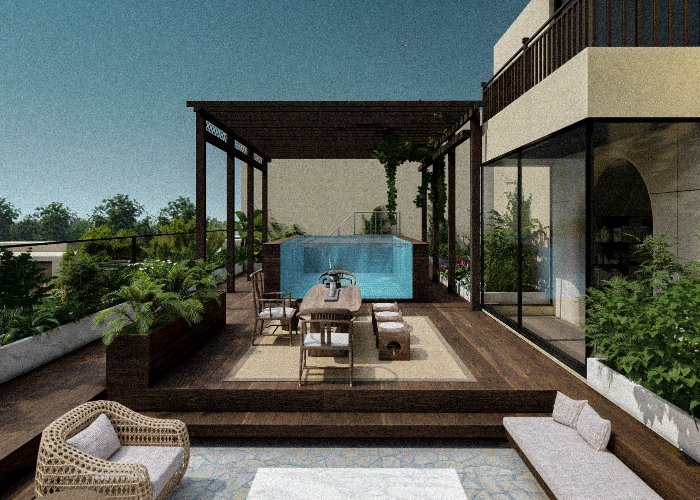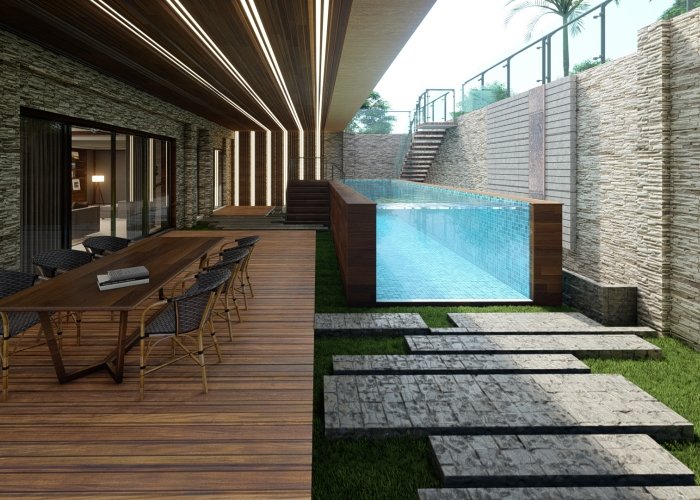
Is An acrylic pool safe?
When we see transparent aquariums, glass-walled swimming pools, or even the ones with see-through bottoms hanging off the edge of a building at aquariums, hotels, or in movies, we're often amazed by the crazy design. At the same time, we might also feel a bit worried. Are these transparent glass pools safe?
The answer is yes, they are safe. They go through rigorous testing before you ever see them. Usually, people will tell you that they're not made of real glass, but rather acrylic, which makes them very safe.
AUPOOL's answer isn't just about the difference in materials. Acrylic panels are indeed much safer than glass walls, but the safety of an acrylic pool involves more than just the material. Many factors affect the safety of an acrylic pool. Think of it like a barrel made up of many wooden staves. If one stave fails, it doesn't matter how strong the others are; water will still leak out. So, let's take a look at the different "staves" that make up the "barrel"!
If you want to learn more about acrylic panels and glass walls, click here:
https://www.aupool.net/blog/pool-acrylic-panels-vs-pool-glass-walls.html
If you want to learn more about the advantages of acrylic panels and glass walls when building a pool, click here:
https://www.aupool.net/blog/is-glass-or-acrylic-better-for-a-swimming-pool.html
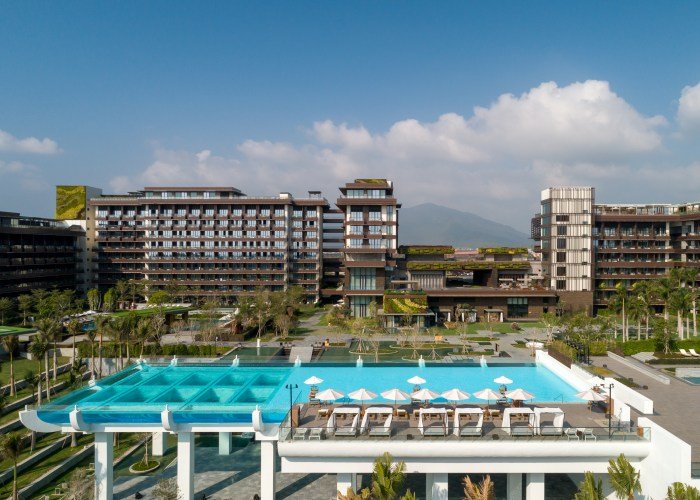
How does AUPOOL ensure the safety of acrylic pools?
Over the past 30 years, AUPOOL has been involved in building numerous acrylic pools and aquariums both domestically and internationally, without a single quality incident. That's because we always prioritize safety at every stage—materials, production/process, design/plan, installation, usage, and maintenance. Safety is our constant focus.
1.Material
AUPOOL has always been committed to not using recycled or old materials. We only use brand-new, high-quality Lucite raw materials. Lucite is the best-performing and most stable among all acrylic materials. To maintain the quality of our raw materials and reduce secondary pollution and oxidation, we use single-tank independent packaging.
To maintain the stability of our raw materials, we insist on using higher-cost, fully independent factory barrel packaging. From the moment the raw materials leave the factory, through transportation, storage, and casting, they are never transferred to another container or exposed to air. This effectively prevents external dust, particles from transporting containers, and debris from storage containers from contaminating the materials. As a result, the quality of the acrylic panels is improved right from the source.
Many factors can affect the final quality of acrylic panels. Even with the same raw materials, different transportation and storage methods can impact the quality. Transferring materials to different containers exposes them to air, allowing dust to enter easily. Once impurities mix with the acrylic raw material, it can prevent optimal polymerization during manufacturing. This can result in unstable acrylic panels that are prone to cracking, yellowing, and other serious issues over time.

2.Production & Process
Production process standards are also a crucial factor in ensuring safety. The same raw materials can yield different quality acrylic panels depending on the production process used.
The production process of AUPOOL acrylic planes:
AUPOOL acrylic panels use a dry constant-temperature polymerization process. This ensures that the acrylic panels reach the optimal polymerization temperature, resulting in a stable structure and superior performance. They are guaranteed not to crack, yellow visibly, change color, become cloudy, or exhibit surface refraction in curved panels for 30 years. The total light transmittance is over 93%, ensuring your safety.
Quality control in AUPOOL acrylic panel production
AUPOOL has its own independent acrylic material laboratory., a professional research and development team, a dedicated quality management department, and an experienced project management team. All projects are strictly controlled using international advanced project management methods. From raw material procurement to acrylic blank production, acrylic processing, packaging, warehousing, outbound logistics, installation, and beyond, we implement strict standardized process controls to eliminate any risks and prevent any substandard products from progressing to the next stage. This ensures product quality and guarantees the smooth and safe completion of each project.
Safety design and validation of AUPOOL acrylic panels:
AUPOOL assigns a professional structural team to each project, along with technical support from the Institute of High Energy Physics of the Chinese Academy of Sciences. For every project, AUPOOL conducts finite element analysis of acrylic strength, comprehensively evaluating stress conditions based on material mechanics, physical properties, on-site environmental constraints, usage conditions, and operational scenarios. This includes assessing hydrostatic pressure, dynamic pressure from waves, and wind pressure effects, analyzing stress effects on acrylic panels and tensile strength, as well as assessing risks of fracture and plastic deformation. This ensures that each acrylic panel's design, physical properties, and safety factors meet all standards, fulfilling usage requirements and ensuring project safety.
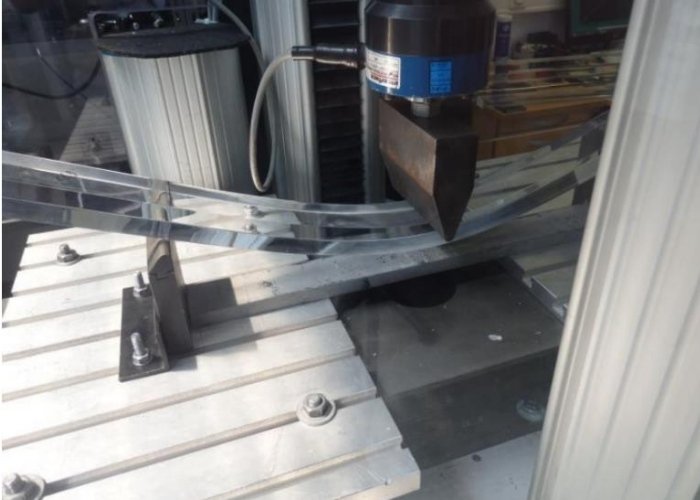
The performance advantages of AUPOOL acrylic panels
(1) High Toughness: AUPOOL acrylic exhibits excellent resistance to bending and fracture. In laboratory tests, when the bending deformation reaches 50% of the length dimension, it maintains this state for 1000 hours without any signs of fracture. (A small experiment: when nailing into AUPOOL acrylic panels, the nail becomes embedded within the acrylic without causing any cracking. It demonstrates excellent toughness.)
(2) High Light Transmission: AUPOOL acrylic boasts a light transmission rate of over 93%, ensuring that there is no surface refraction even on curved surfaces.
(3) Maximum Practical Thickness: AUPOOL acrylic panels can practically reach a maximum thickness of 950mm (37.4 inches), showcasing our capability and experience in producing super-thick panels.
(4) Rockwell Hardness: The average Rockwell hardness of AUPOOL acrylic exceeds 105 degrees, surpassing industry standards.
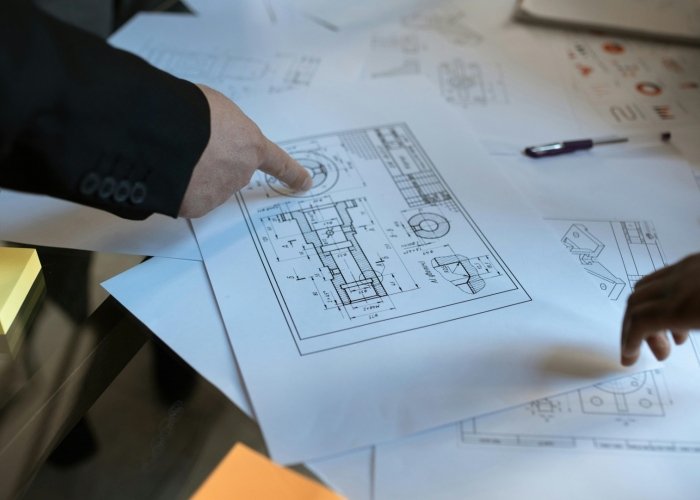
3.Design & Plan
Many times, people don't have a lot of knowledge about acrylic pools. Designers may focus on how to bring out crazy design ideas while overlooking hidden safety issues when designing pools. But don't worry, with extensive experience in acrylic pool projects, AUPOOL will provide reasonable advice to help designers bring their crazy ideas to life. This ensures not only the most stunning effects but also saves money while ensuring safety.
Upon receiving inquiries from clients, if AUPOOL identifies any safety concerns in their designs, we will alert them and provide our recommended safety measures.
Many times, people aren't very familiar with the pricing of acrylic, so during the design phase, they may prioritize visual effects, inadvertently leading to excessively high construction costs. In such cases, we typically offer optimization suggestions based on the initial design, aiming to minimize costs while preserving the desired visual appeal to meet the client's expectations.
How do you determine the appropriate thickness of acrylic panels?
In acrylic pool projects, the cost of acrylic panels is often the biggest factor. Since cost is determined by the weight of acrylic panels, choosing the appropriate thickness is crucial. It ensures safety while avoiding excessive thickness that could drive up costs. How do you determine the appropriate thickness of acrylic panels?
Typically, based on AUPOOL's extensive experience in acrylic pool projects over many years, the thickness of acrylic panels is closely related to the depth of the water and the length of the acrylic panels, especially in common types of projects like acrylic wall pools. Acrylic is a flexible plastic material that can deform under pressure. Since acrylic pool panels are usually fixed on three sides with no structural support above, it's essential to consider both safety and aesthetics to prevent deformation.
For example, for acrylic side panels of around 10 meters (32.8 feet) in length, in locations below 38 degrees north latitude with a visible water depth of 1.2 meters (3.93 feet), our usual experience dictates that the acrylic thickness should be no less than 120mm (4.72 inches). If longer acrylic panels are required, the thickness should be increased accordingly based on the specific length.
The most scientific approach, of course, is to conduct finite element analysis calculations based on the specific conditions of the project. If the project or geographic location is particularly unique, such as being in a high-latitude area, it's necessary to consider local climate conditions and actual usage scenarios. Through finite element analysis, the specific thickness of acrylic can be determined.
Acrylic pools endure significant water pressure, waves generated by multiple swimmers, and dynamic pressure from the flow of people, along with constantly changing wind pressures. The pressure environment is highly complex, demanding stringent safety requirements. Each AUPOOL project is equipped with a professional structural team that conducts finite element analysis on acrylic strength. Static strength simulations are performed on acrylic panels to assess stress conditions comprehensively. This ensures that the thickness, design, and safety factors of the acrylic panels for each project fully meet standards.
For acrylic bottom pools or acrylic windows, the method of determining acrylic thickness varies depending on the building structure. Consequently, the optimal acrylic panel thickness recommended by AUPOOL may differ for different projects. For specific inquiries, you can consult AUPOOL engineers, who will provide the most reasonable advice tailored to your project.
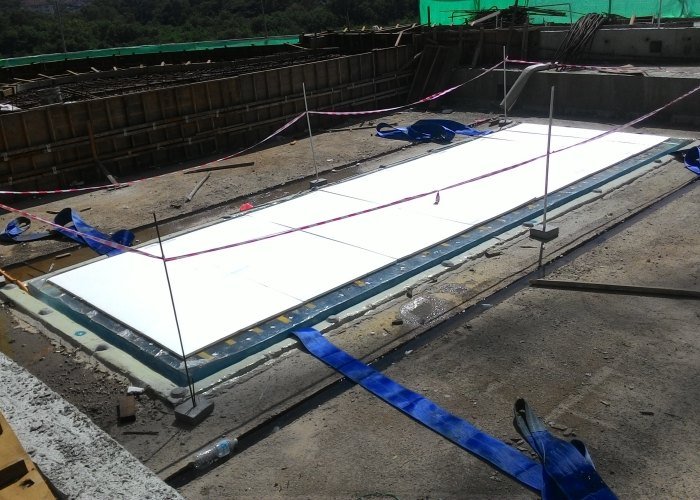
4.Installation & Construction
The installation and construction of acrylic pools are also crucial for ensuring safety. AUPOOL has participated in the design and construction of over 1000 projects, including oceanariums, glass wall pools, acrylic pools, and acrylic-bottomed pools, without a single quality incident to date. This achievement is closely tied to our high standards of installation and construction.
AUPOOL installation and construction standards
AUPOOL has a highly skilled and experienced team specializing in acrylic pool installation. All construction personnel have over 10 years of experience in the industry, with extensive experience in constructing large-scale acrylic pool projects. They have accumulated rich experience in both design and on-site construction during project development.
1. We use high-quality silicone weather-resistant sealant for acrylic structural bonding. The structural adhesive bonds tightly with acrylic and the groove, providing strong resistance to tensile, compressive, and bending forces. Additionally, the structural adhesive material is harmless to the human body when submerged in water for extended periods, meeting the water quality requirements of the National Swimming Pool Water Quality Standards.
2. For each project, AUPOOL conducts a thorough review and calculation of the thickness of acrylic glass panels based on our unit's acrylic panel production process and the depth of the pool. This ensures that the supplied panels are of adequate thickness to withstand the water pressure in the pool, preventing any quality issues arising from insufficient acrylic panel thickness.
3. AUPOOL utilizes large-scale oceanarium waterproofing construction methods with multiple layers of protection to ensure that upon project completion, customers can use it with peace of mind and safety.
4. AUPOOL coordinates in advance with the construction unit according to the construction plan and follows up throughout the process. We strictly adhere to the installation based on the confirmed construction drawings, ensuring that the project proceeds without a hitch.
5. The transparency, hardness, tensile strength, flexural strength, surface smoothness, wear resistance, allowable impurities, and other properties of AUPOOL acrylic products must meet specified standards. The appearance and physicochemical parameters should not be lower than those outlined in the "Performance Parameters of AUPOOL Acrylic Pool Panels."
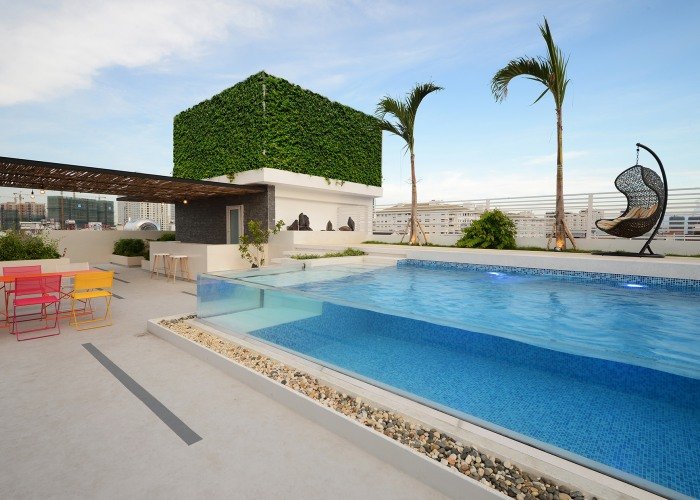
5.Usage/Maintenance
After installation, proper use and maintenance can help you better and safely enjoy your acrylic swimming pool for a long time.
Acrylic Usage Tips:
1. Avoid contact with chemicals such as paint, solvents, etc., to prevent surface damage.
2. Prohibit the use of adhesive stickers and other sticky substances to avoid damage and permanent harm.
3. Use only mild soap foam and water for cleaning, avoid using window and kitchen cleaning agents.
4. Avoid using hard scrubbing pads to prevent surface scratching.
5. When using and cleaning the pool, avoid damaging the structural adhesive to prevent leakage.
6. Avoid scratching and impacting acrylic with hard objects to prevent irreparable damage.
7. Keep away from open flames, high temperatures, hot lamps, and vibration operations to prevent fires or cracks.
Acrylic Maintenance Tips:
1. General Cleaning: Use mild soap foam and water for gentle wiping, avoiding the use of hard objects or wire balls.
2. Oil Stain Cleaning: Use hand soap, laundry detergent, or acrylic-specific cleaners to remove stains. Rinse thoroughly with plenty of water afterward, and avoid using window and kitchen cleaning agents.
3. Surface Algae Cleaning: Gently scrape off algae, being careful to avoid scratching the surface. Then, wipe with a soft cotton cloth dampened with soapy water.
4. Cleaning Product Selection: Only use neutral soap, and avoid using strong detergents to prevent damage from chemical reactions.
5. Notify Maintenance Personnel: Ensure that maintenance personnel are aware of the above precautions for acrylic glass cleaning, maintenance, and care to avoid unnecessary damage.
Throughout the design, construction, and daily use processes, AUPOOL prioritizes safety, providing customers with high-quality service and reliable products. Let's work together to ensure these amazing transparent structures bring more safety, enjoyment, and surprises to people's experiences.
Feel free to reach out to our engineers for any inquiries regarding acrylic swimming pools. We're delighted to assist you! click here: Contact us






